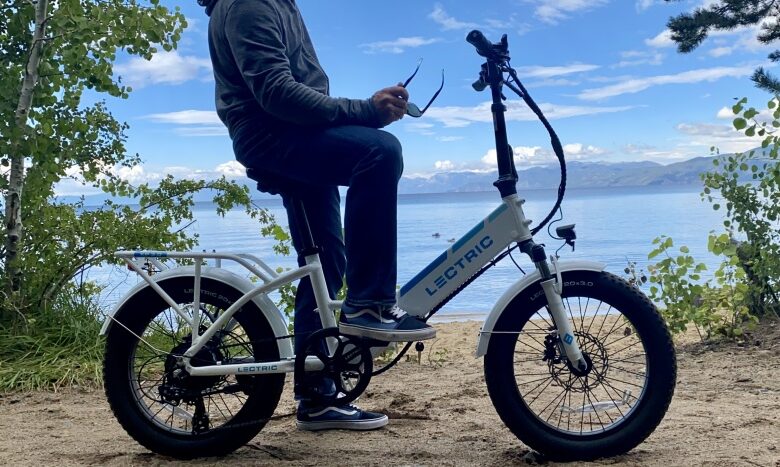Top 7 Features to Look for in a Folding Electric Bike in 2025

Folding electric bikes are no longer a niche product. In 2025, they are quickly becoming one of the most practical choices for commuters, travelers, and city riders who want the speed and ease of an e-bike without the bulk.┬Ā
A good folding e-bike can slip under your desk, fit into the trunk of a car, or be carried onto a train, all while giving you reliable electric assistance for longer rides.
But with so many models on the market, choosing the right one can feel overwhelming. The best way to narrow it down is by looking at the features that truly matter. From battery range to folding mechanisms, these details can make or break your riding experience.┬Ā
If youŌĆÖre shopping for the best folding electric bike, here are the top seven features you should keep an eye on in 2025.
1. Battery Range and Charging Time
The battery is the heart of any folding electric bike. Range and charging speed directly shape how useful the bike will be in daily life.
A longer range means fewer worries about running out of power on the way to work or during a weekend trip. In 2025, many folding e-bikes offer 25 to 50 miles per charge, depending on terrain, rider weight, and assist level. Some premium models even push 60+ miles with larger capacity batteries.
Charging time is the other half of the equation. A bike that takes all night to recharge may be inconvenient if you rely on it daily. Modern models now come with fast-charging options that restore most of the battery in 3 to 4 hours, while standard chargers may take 6 to 8 hours.
When comparing folding e-bikes, pay close attention to:
- Battery capacity (Wh): Higher watt-hours equal longer range.
- Charging speed: Fast charging is worth the investment if you ride every day.
- Removable vs. built-in batteries: Removable batteries are easier to charge indoors or swap out for a spare.
If range anxiety is a concern, always choose a model with a slightly higher capacity than you think youŌĆÖll need.
2. Motor Power and Performance
A folding e-bikeŌĆÖs motor determines how smoothly and efficiently it handles different conditions. The motor provides the assistance you need for acceleration, hill climbing, and maintaining steady speeds.
In 2025, most folding e-bikes use rear hub motors in the 250W to 500W range. A 250W motor is typically enough for flat city commutes and lighter riders, while 350W to 500W motors provide stronger acceleration and make hills far less intimidating. Some higher-end folding bikes even offer mid-drive motors, which balance weight better and deliver more natural pedaling assistance.
Key points to consider include:
- Power output: Higher wattage means more torque for hills and cargo.
- Top speed: Many folding e-bikes cap at 20 mph (Class 1 and 2), though some models can reach 28 mph (Class 3).
- Assist levels: Multiple pedal-assist settings let you control how much work the motor does.
- Noise and smoothness: A quiet motor improves the overall riding experience.
For riders in hilly areas or carrying heavier loads, investing in a more powerful motor is worth it. If you only ride short distances on flat terrain, a lower-watt motor can save you weight and battery life.
3. Weight and Folded Size
One of the biggest advantages of folding e-bikes is portability, but that benefit only pays off if the bike is light and compact enough to handle.
Weight varies widely across models. In 2025, many folding e-bikes weigh between 35 and 55 pounds. Lighter models are easier to carry upstairs or onto public transit, but they may sacrifice battery size or motor power. Heavier models often ride more smoothly and offer better range, but they can be awkward to carry for long stretches.
The folded size is just as important as weight. The best folding bikes collapse into a footprint small enough to fit:
- Under a desk at work
- Into the trunk of a small car
- In a closet or a tight apartment hallway
Look for a bike with a simple folding mechanism that locks securely in place, so you donŌĆÖt have to wrestle with it every time. Some high-end models now fold in under 15 seconds, which makes a huge difference during daily commutes.
When choosing, think about your lifestyle: Do you need to carry the bike often, or just fold it for storage? A slightly heavier bike may be fine if portability isnŌĆÖt a daily concern.
4. Folding Mechanism and Ease of Use
The folding mechanism can make or break the experience of owning a folding e-bike. A bike that folds quickly, securely, and without pinching your fingers will save you endless frustration.
Modern designs often use a single-step or two-step system, allowing the bike to collapse in less than 20 seconds. Others require multiple levers and locks, which can feel clunky if you fold and unfold the bike several times a day.
When evaluating folding mechanisms, look for:
- Simplicity: Fewer steps usually mean faster and more convenient folding.
- Safety locks: Sturdy latches prevent accidental unfolding while riding.
- Durability: Metal hinges and high-quality joints last longer than plastic ones.
- Stability: Once folded, the bike should stay compact and not wobble.
If you plan to use public transport or store the bike at work daily, prioritize an easy folding system. A smooth mechanism not only saves time but also reduces wear and tear over the years of use.
5. Frame Material and Build Quality
The frame is the backbone of your folding e-bike, and its material determines weight, durability, and overall feel. In 2025, the most common frame materials include:
- Aluminum alloy: Lightweight, rust-resistant, and widely used in mid-range models.
- Carbon fiber: Extremely light and strong, but more expensive.
- Steel: Durable and comfortable to ride, but heavier and prone to rust without proper care.
Good build quality is just as important as the material. A solid frame ensures the bike can handle bumps, daily folding, and the stress of commuting without loosening over time.┬Ā
Poorly made frames often lead to squeaks, cracks, or misalignment, which eventually turn into larger repair issues. If you want to avoid dealing with breakdowns later, consider checking resources like this guide on common e-bike problems and fixes.
6. Safety Features
A folding electric bike should be as safe as it is convenient. In 2025, many models will come with built-in safety features that were once optional.
Key safety aspects to look for:
- Braking system: Hydraulic disc brakes offer the best stopping power, especially in wet conditions. Mechanical discs are also reliable, while rim brakes are less effective on e-bikes.
- Integrated lights: Front and rear LED lights improve visibility at night and in traffic.
- Reflectors and tire grip: Wide, grippy tires and reflective sidewalls add stability and safety for city riding.
- Ride stability: A well-balanced design reduces wobble when carrying cargo or riding at higher speeds.
Safety features are not just add-ons; they are essential. A folding bike is often used in dense city traffic, so reliable brakes and strong lights can be the difference between a safe ride and an accident.
7. Smart Technology and Extra Features
Folding e-bikes have come a long way, and many 2025 models now integrate smart technology for convenience and security. These extras might not be deal-breakers, but they can add serious value to your daily ride.
Examples include:
- App connectivity: Track rides, adjust assist levels, or lock the bike remotely.
- GPS tracking: Built-in theft protection is a big plus in busy cities.
- Advanced displays: Color screens that show speed, range, battery level, and navigation.
- Multiple assist modes: Fine-tune your ride with eco, normal, and sport settings.
Other handy features may include mudguards, cargo racks, or suspension systems for smoother rides. While these extras add to the price, they often make the bike more enjoyable and practical for long-term ownership.
Conclusion
Folding electric bikes have transformed from niche gadgets into everyday transport solutions. In 2025, the best models combine practicality with performance, offering enough range for daily rides, motors powerful enough for hills, and folding systems that make storage simple.┬Ā
The right frame material ensures long-term durability, while safety features like strong brakes and integrated lights keep you protected on busy streets. Extra touches, such as smart apps and GPS tracking, add convenience and peace of mind.
When you look at these seven features together, it becomes clear that the best folding e-bike is one that balances portability, power, and reliability.┬Ā
By focusing on the details that matter most to your lifestyle, you can find a bike that is not only easy to carry but also dependable for years to come.





